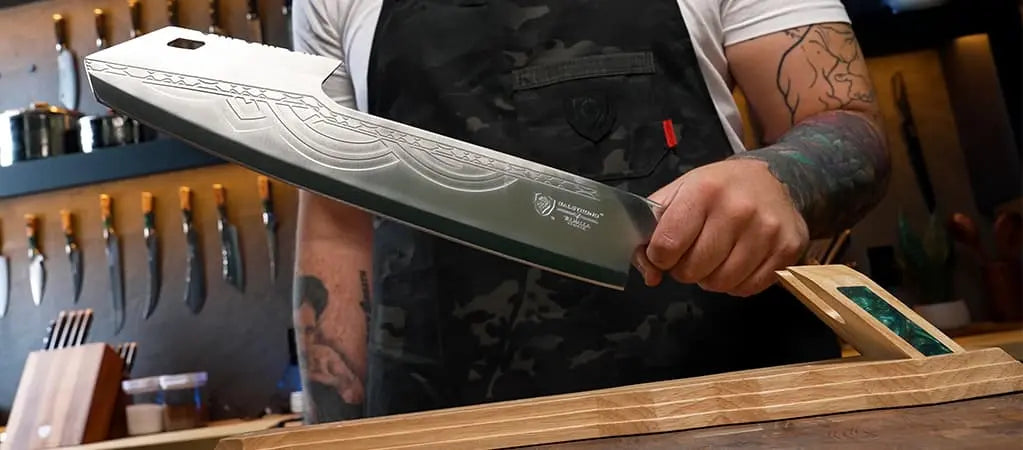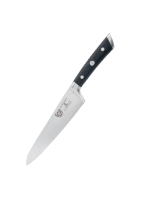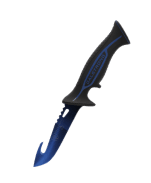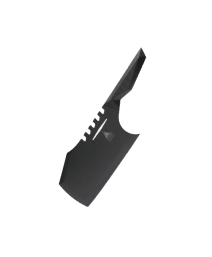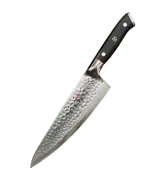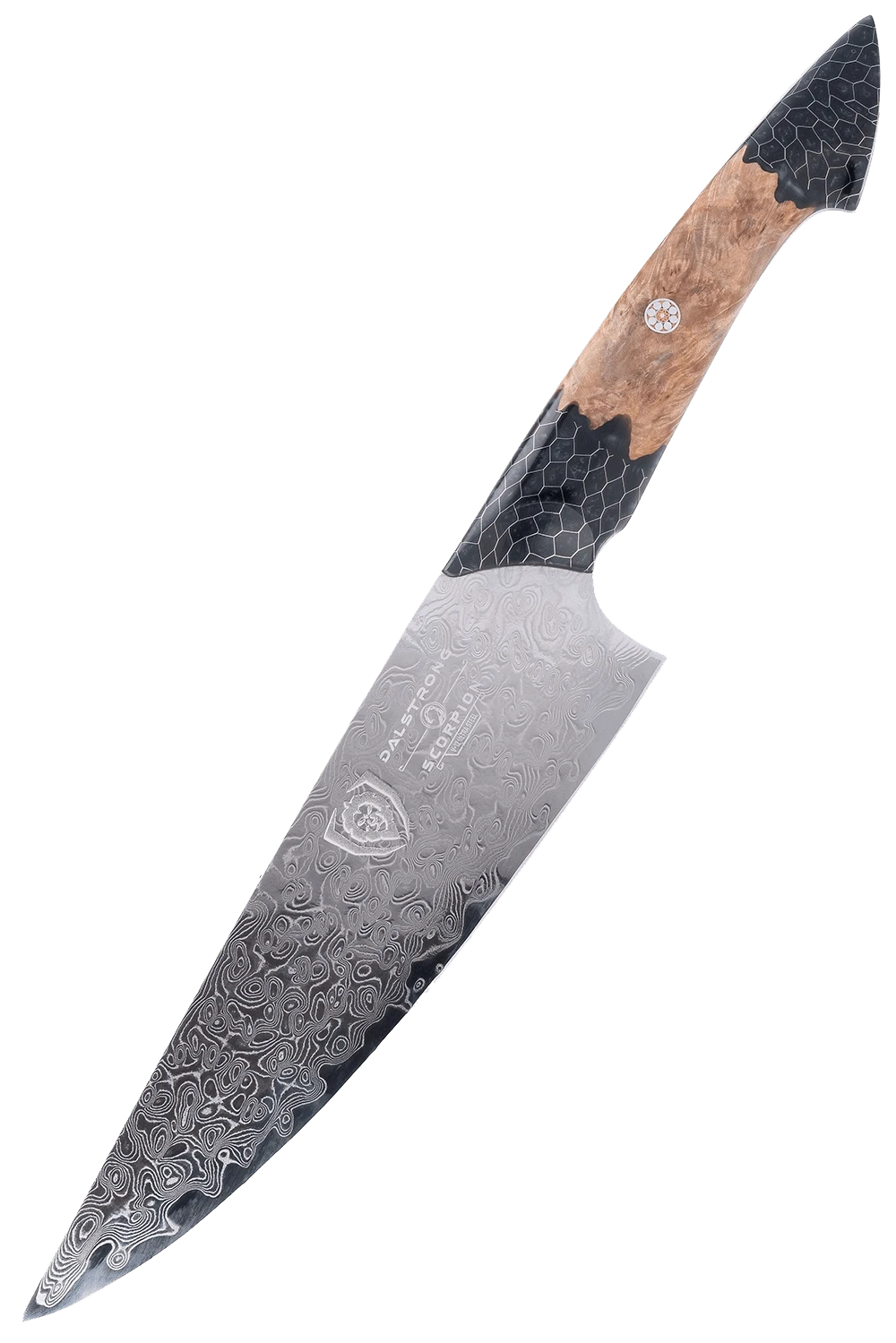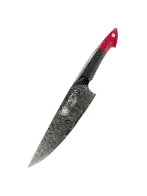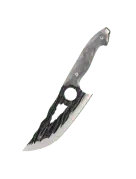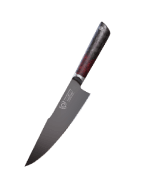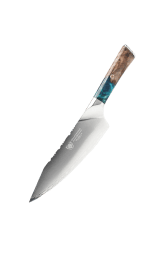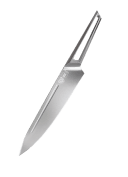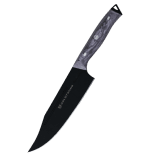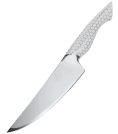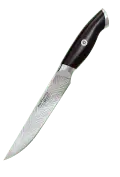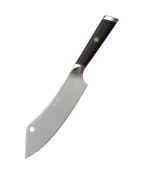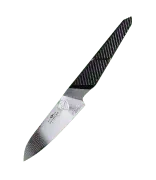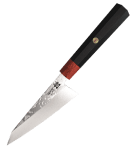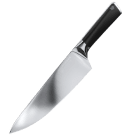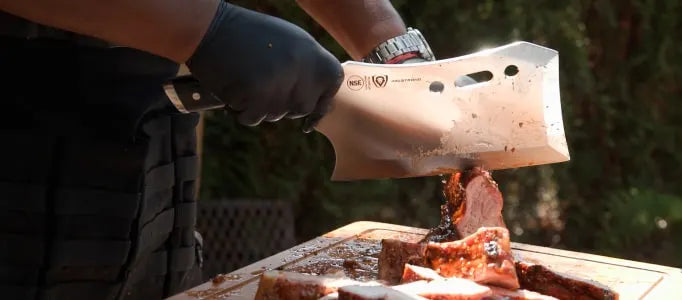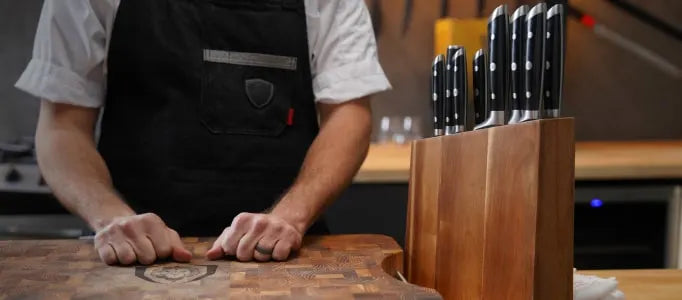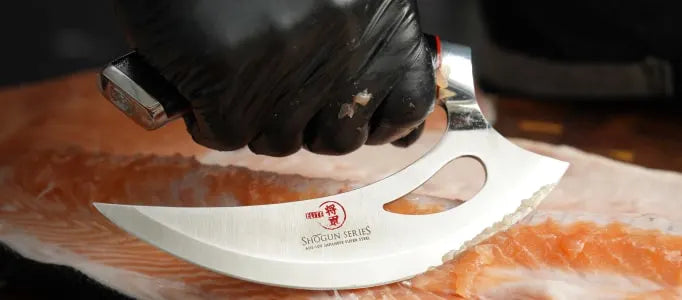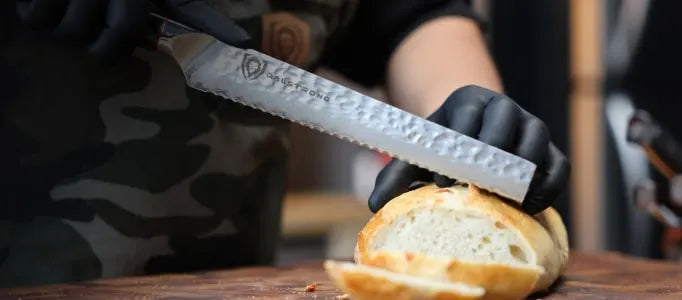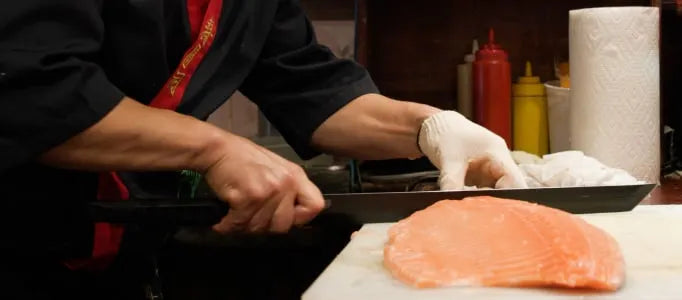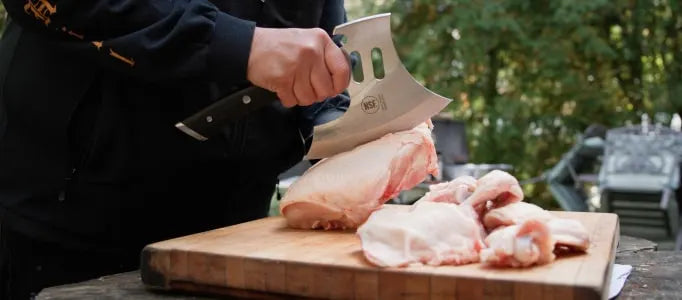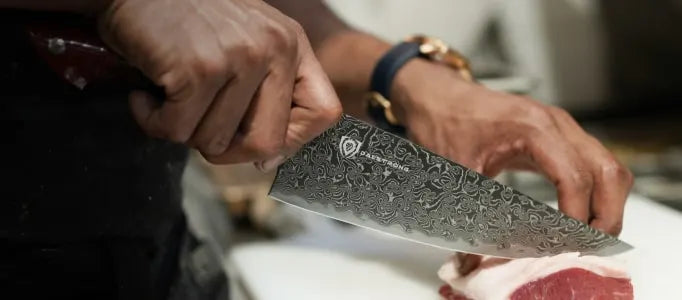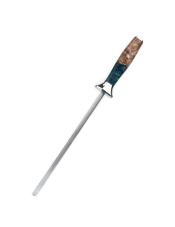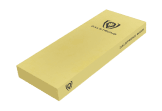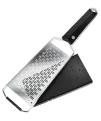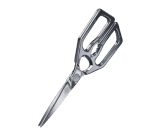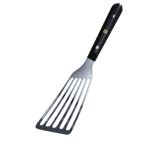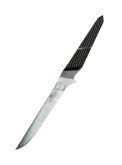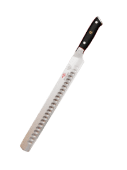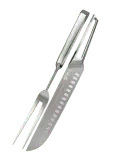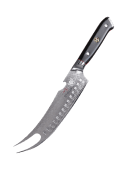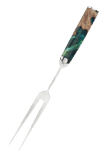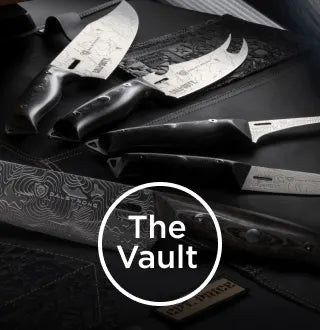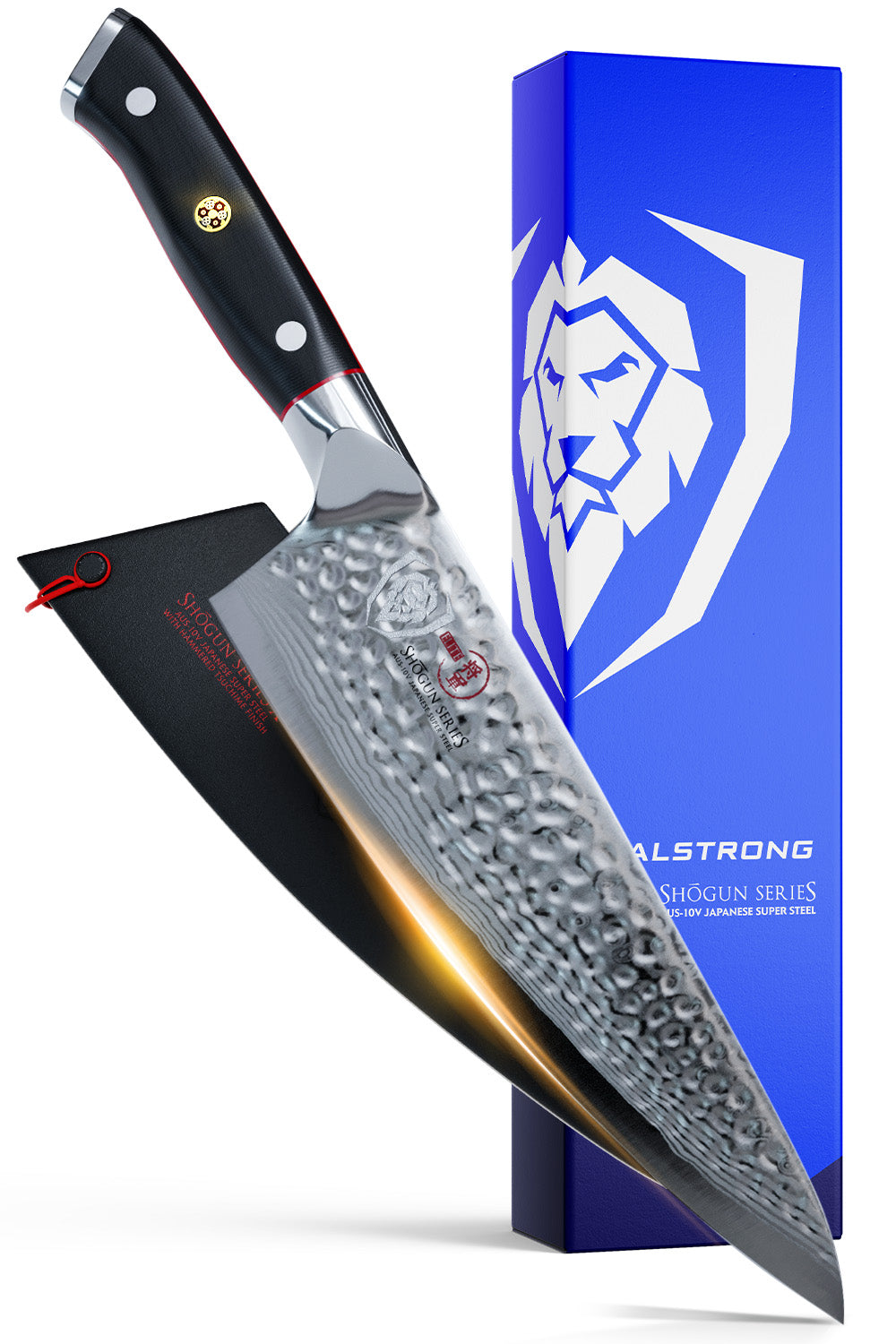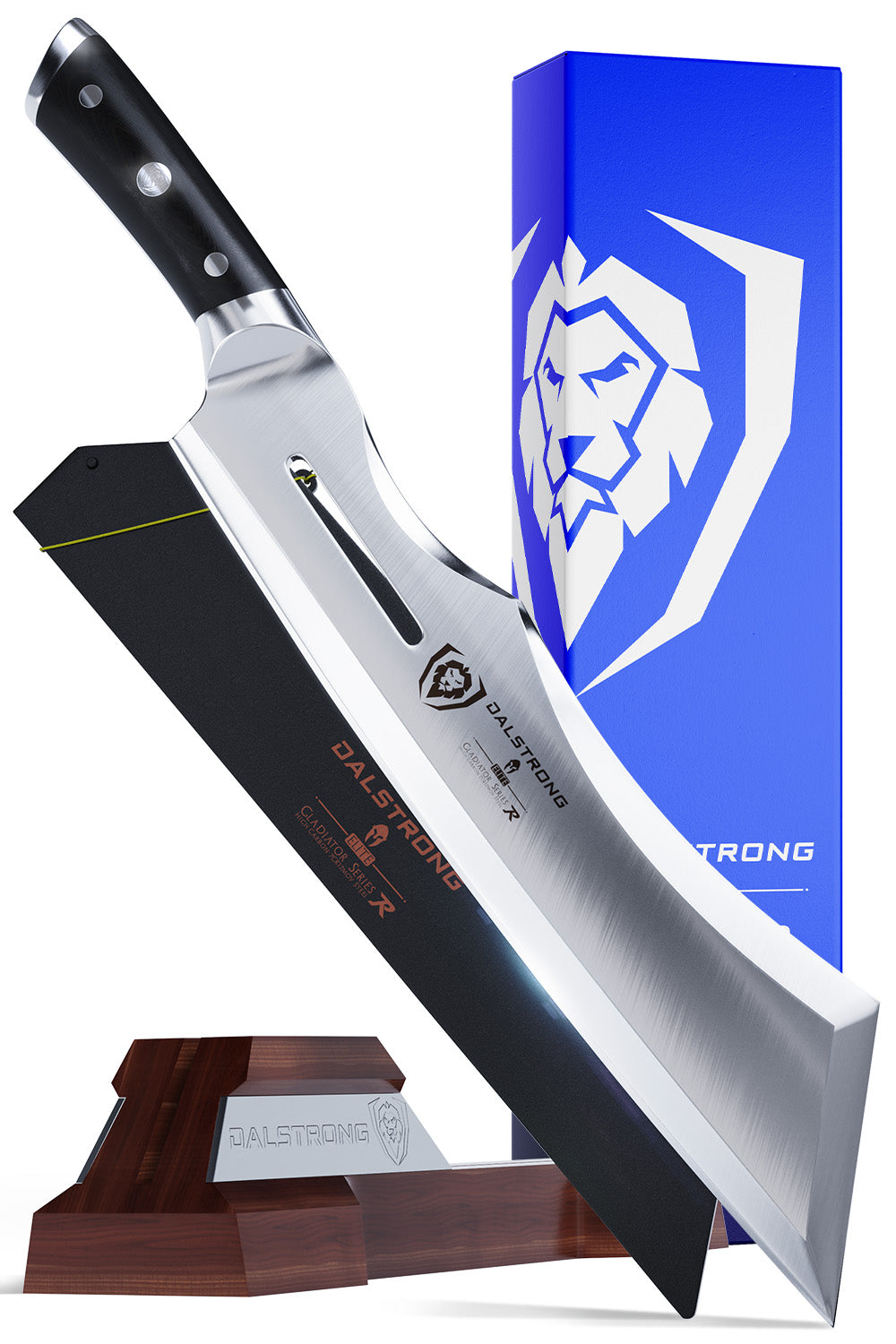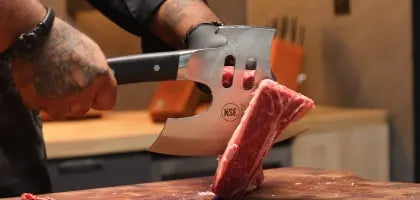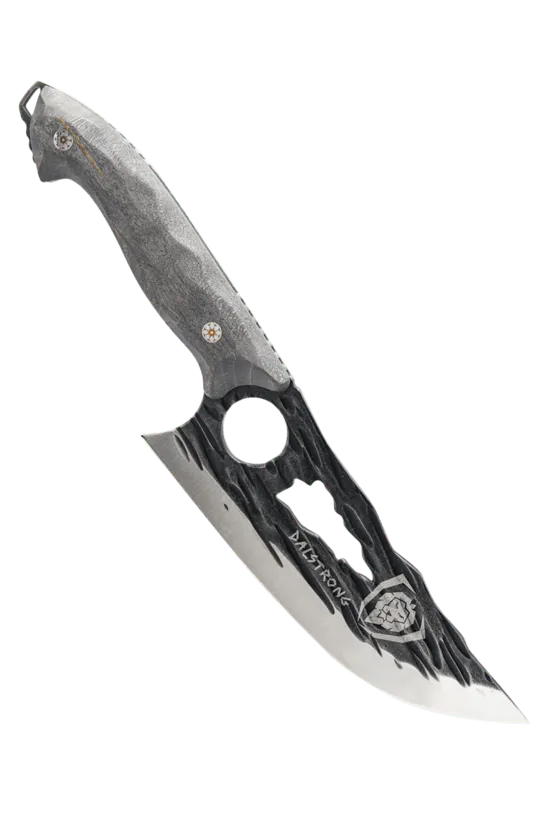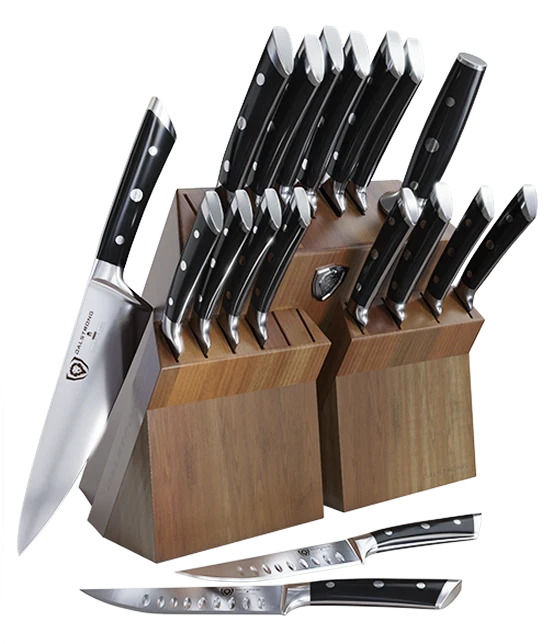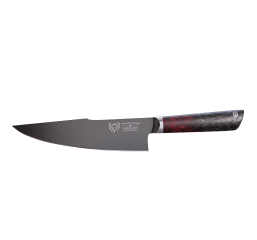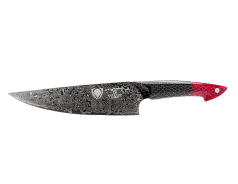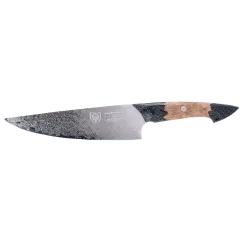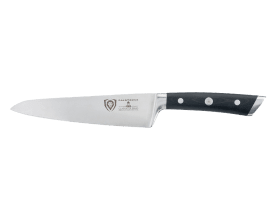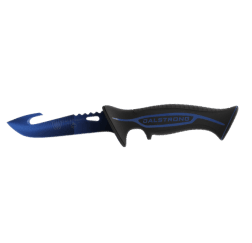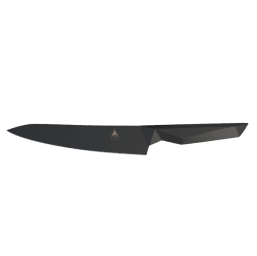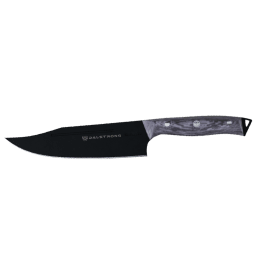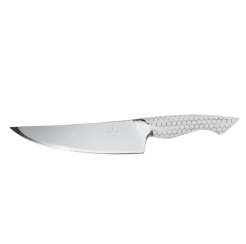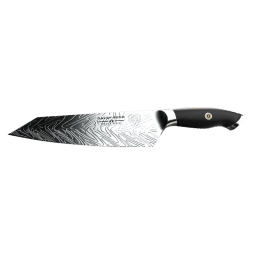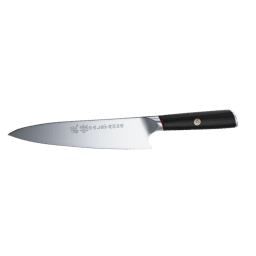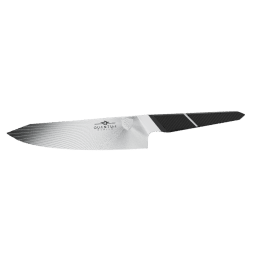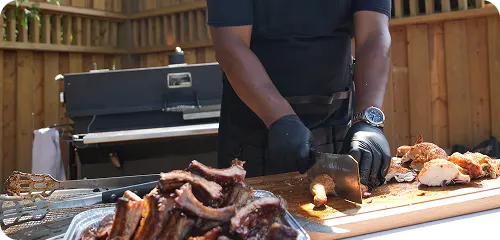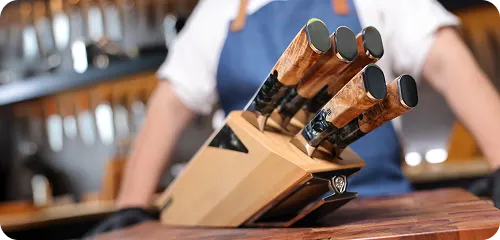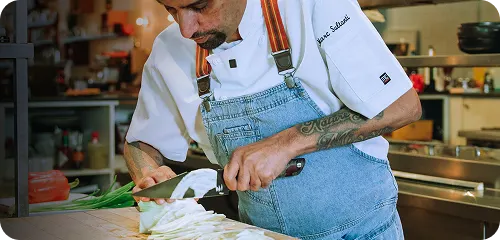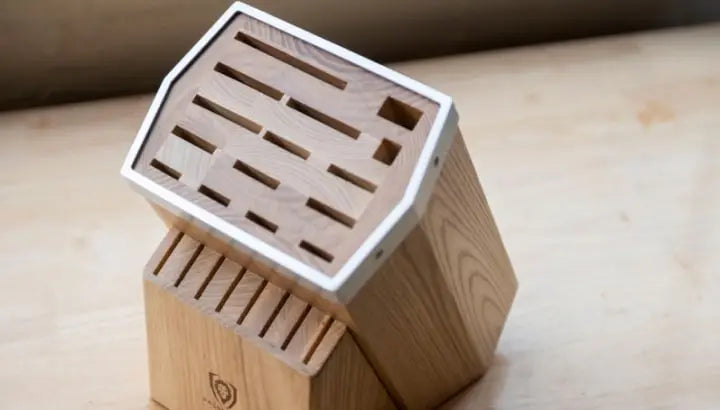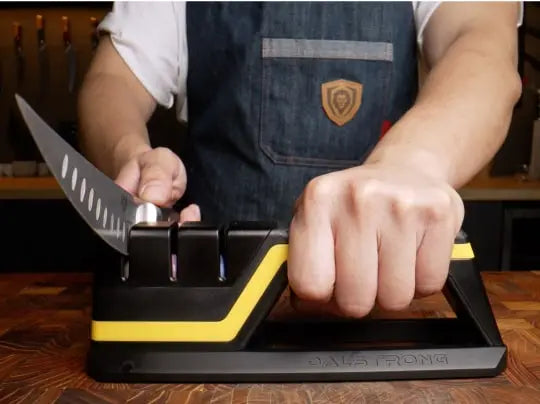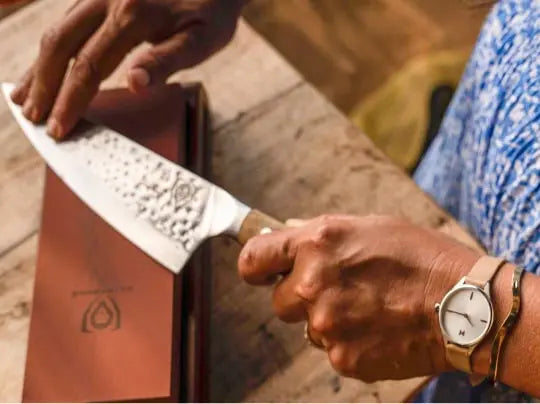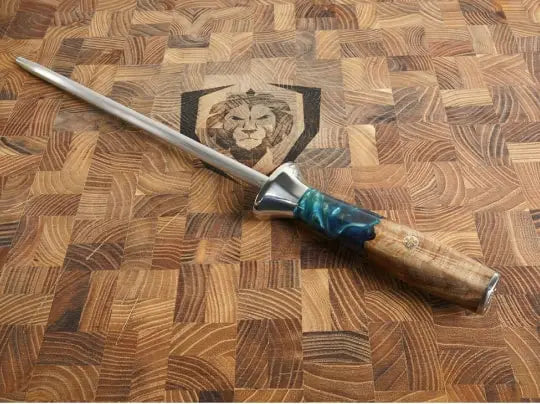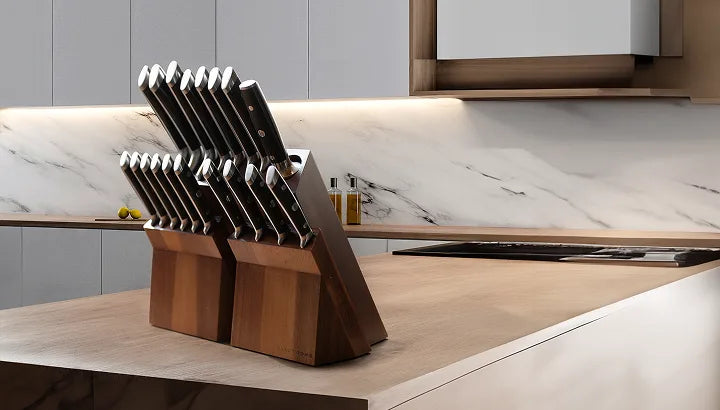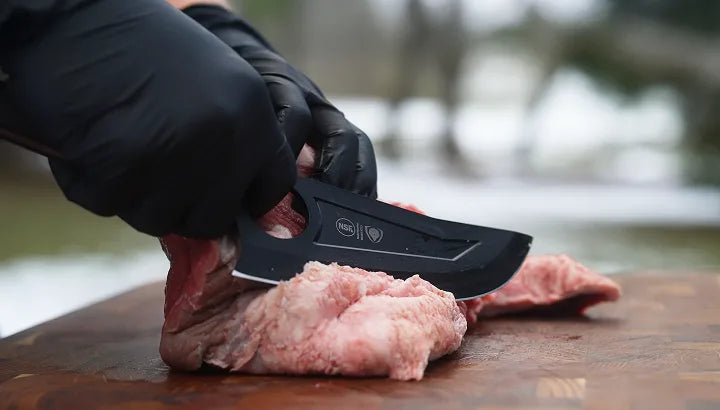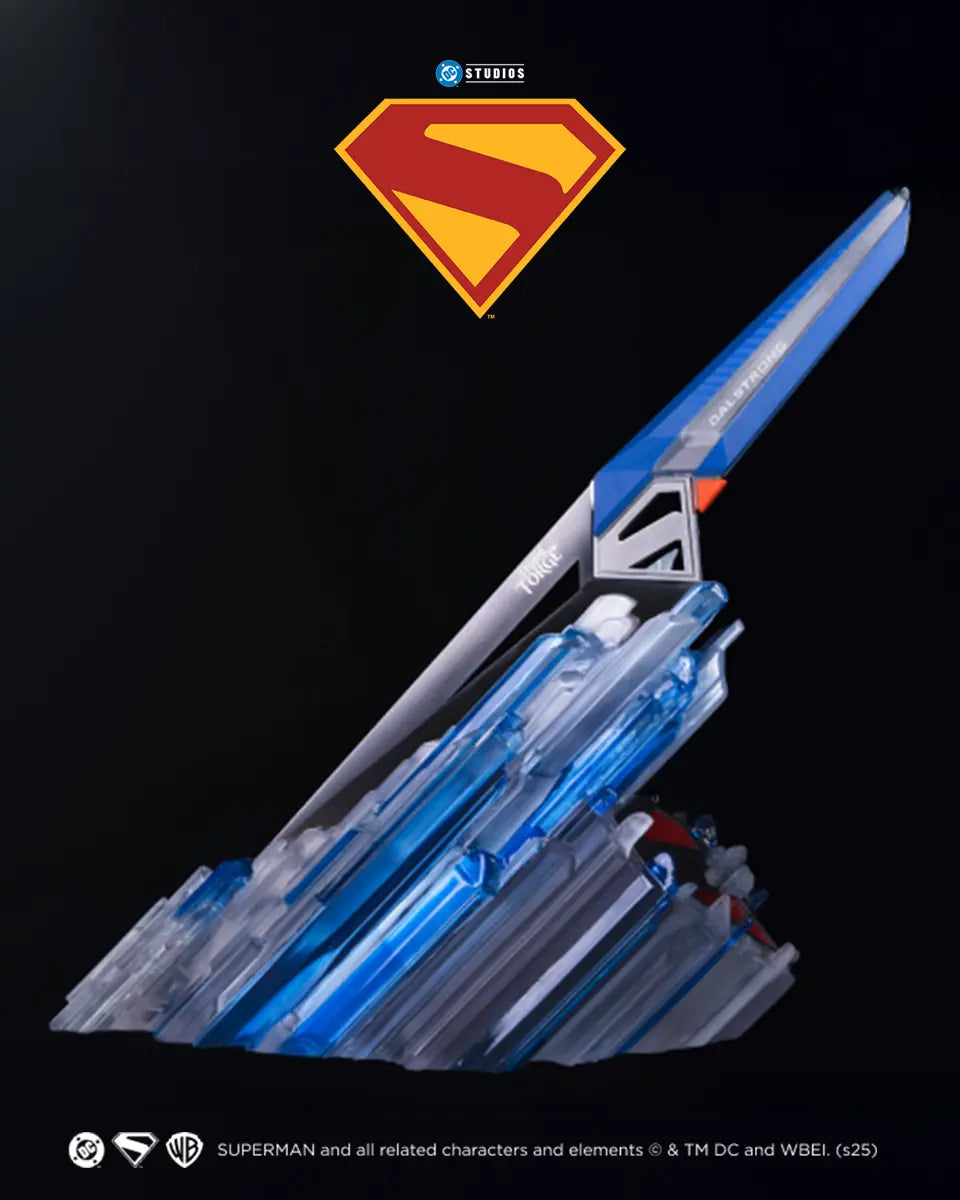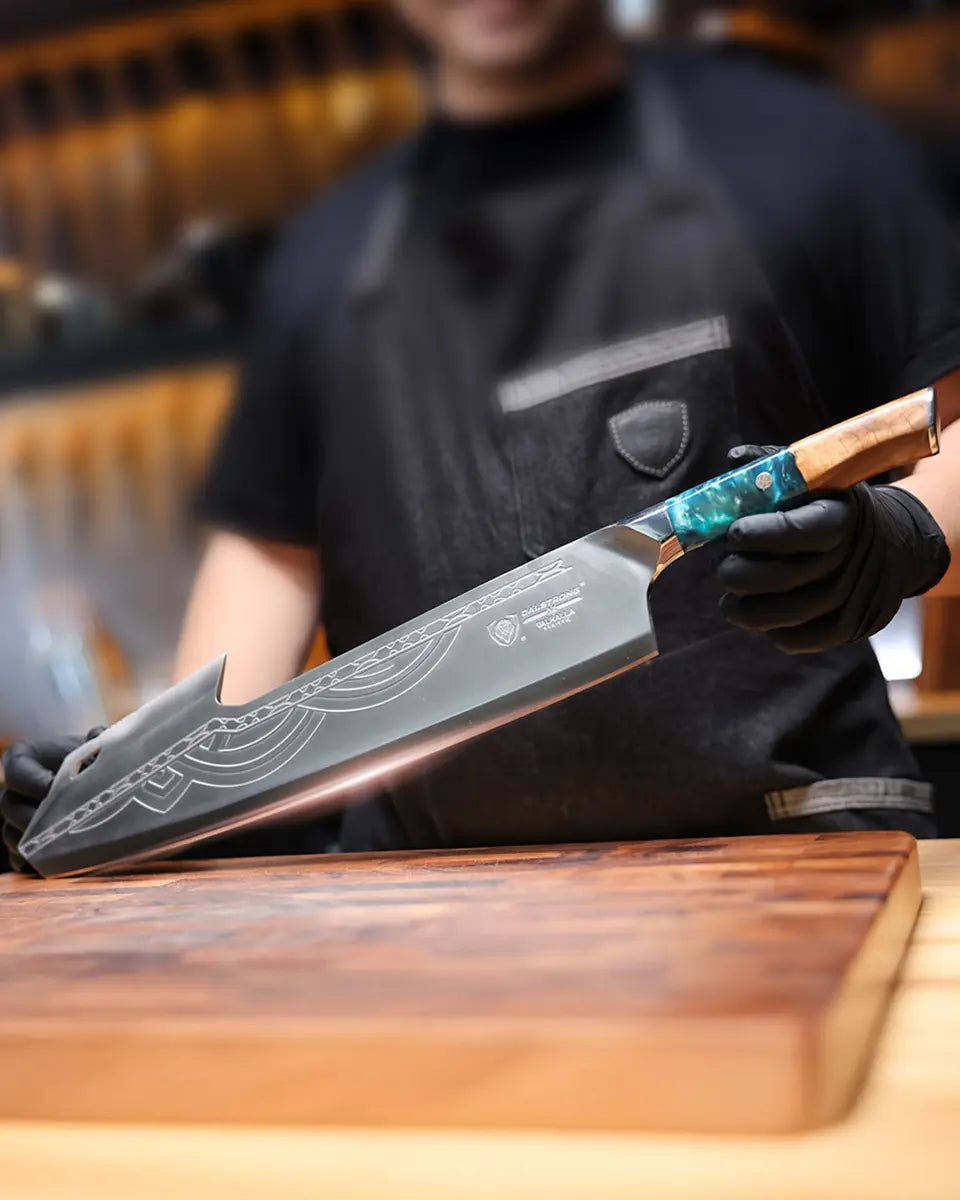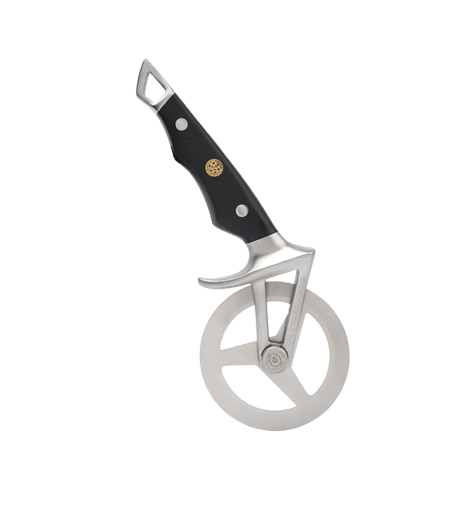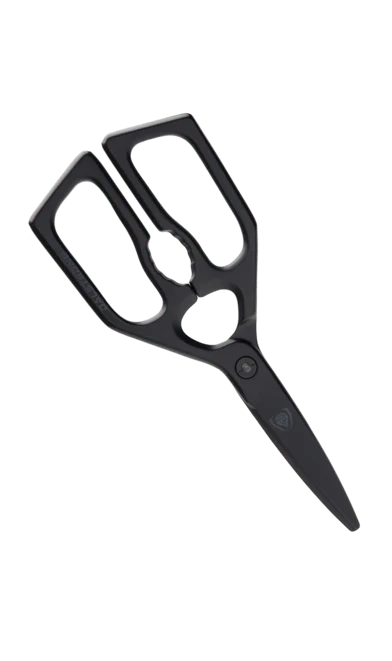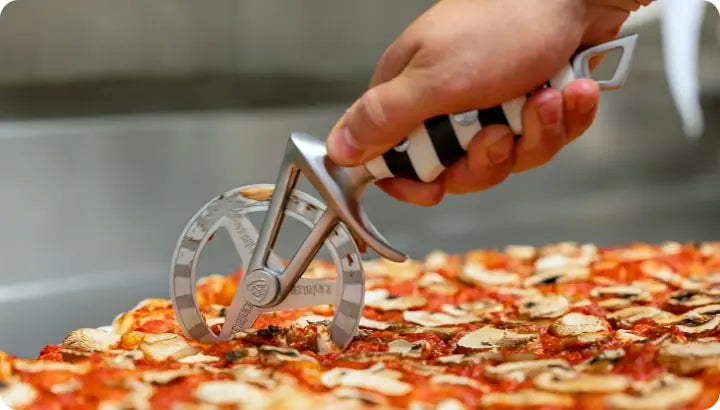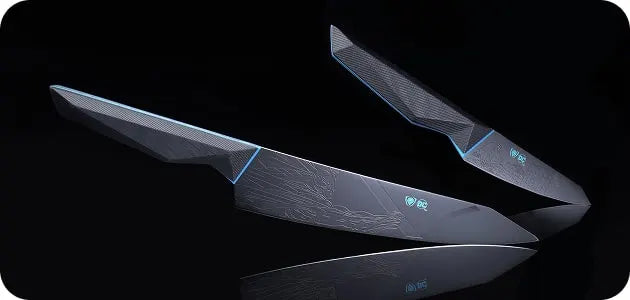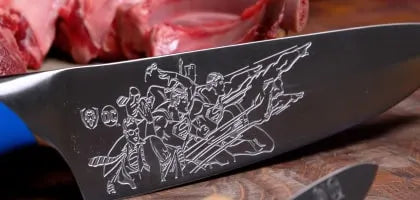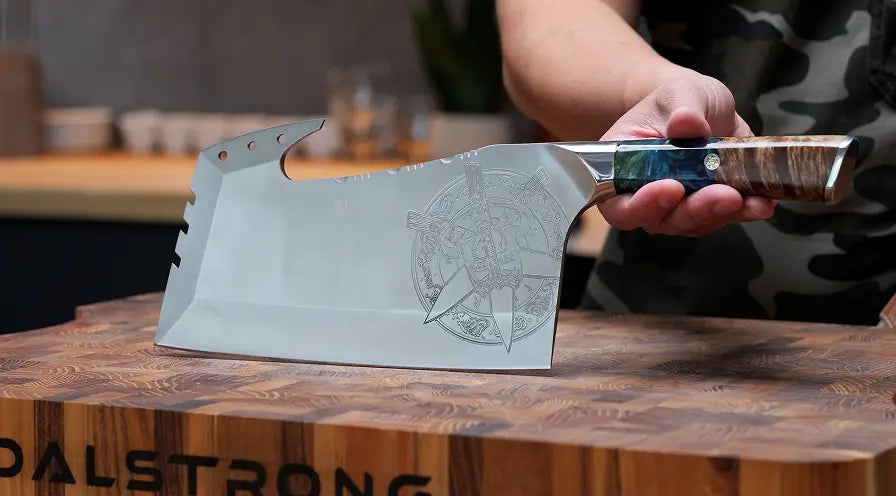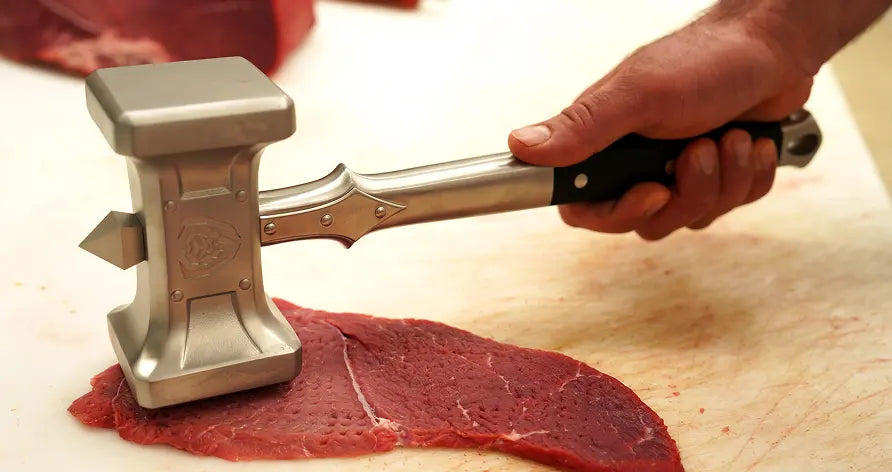 Chef's Knife 8" | Phantom Series | Dalstrong
Chef's Knife 8" | Phantom Series | Dalstrong
In the vast realm of culinary arts, mastering the art of knife cuts is a fundamental skill that every chef, whether professional or home cook, should possess. Clean and sharp knife cuts not only enhance the look of dishes but also enhance the flavors. In this blog, we’ll be chatting about the many different types of knife cuts and how you can be precise with your cuts.
1. What Are Knife Cuts?
 Santoku Knife 7" | Shogun Series ELITE | Dalstrong
Santoku Knife 7" | Shogun Series ELITE | Dalstrong
At the heart of culinary craftsmanship lies the ability to execute basic knife cuts with finesse. From the classic julienne cut to the medium dice, these fundamental techniques form the building blocks of culinary creativity. Whether you're attending cooking classes or embarking on a professional culinary career, mastering basic knife skills is your initiation into the world of gastronomy.
Precision and Uniformity: The Chef's Knife as the Culinary Maestro
The chef's knife, often considered the maestro of the kitchen, plays a pivotal role in executing precise cuts. Whether you're creating thin strips for a stir-fry or finely chopped ingredients for a delicate sauce, the chef knife is your trusted companion. As you square off your vegetables and cut lengthwise with inch-thick precision, the importance of a quality chef's knife becomes evident.
Diverse Techniques for Culinary Brilliance
In cooking, experts use different knife tricks to make their food extra special. Things like the rondelle cut, chiffonade cut, and batonnet cut show how skilled they are with knives. Every technique can make your food look great or help it cook perfectly. And the best part? You don't have to be a chef in a restaurant either! These tips and tricks work wonders for home cooks too.
Culinary Artistry: Mise en Place and Knife Cuts
In the culinary world, the term "mise en place" talks about to the meticulous preparation of ingredients before cooking. Knife cuts play a crucial role in achieving an organized mise en place. From the brunoise to the classic french fry cut, uniformity in knife cuts ensures that every element is harmoniously prepared, allowing for a seamless and enjoyable cooking experience.
Navigating the Culinary Landscape with Professional Culinary Tools
Quality kitchen knives are crucial, whether you're a professional chef or a home cook. Choosing the right tools, like paring knives and chef knives, is essential for achieving perfect cuts. Kitchen knives, tested and reviewed for various culinary techniques, can significantly impact your culinary journey.
Conclusion: Knife Cuts as a Culinary Signature
In conclusion, truly grasping the art of knife cuts goes beyond mere technique; it's about crafting your own culinary identity. Whether it's the careful julienne or the artistic chiffonade, each knife cut adds both visual charm and flavor to your dish. As you dive into the world of cooking, keep in mind that honing your knife skills isn't just a necessary step but a genuine craft that showcases your expertise in the kitchen.
2. Basic Knife Cuts You Should Know
 Vegetable Chef's Knife 7" | Shadow Black Series | NSF Certified | Dalstrong
Vegetable Chef's Knife 7" | Shadow Black Series | NSF Certified | Dalstrong
Unlocking Culinary Mastery: Basic Knife Cuts Every Aspiring Chef Should Know
In the world of culinary arts, the mastery of basic knife cuts is akin to wielding a painter's brush for a chef. Imagine pretty ribbons of basil or spinach making your dishes look fancy. The chiffonade cut is about stacking and rolling leafy greens before cutting, creating thin ribbons that not only make your food look good but also make sure the flavors are spread evenly.
Julienne Cut: Precision in Thin Strips
The julienne cut, often hailed as a cornerstone technique, involves slicing vegetables or fruits into long, thin strips. Picture the finesse required to create perfectly uniform matchsticks of carrots or zucchinis. This trick not only makes salads and stir-fries look better but also makes sure everything cooks evenly because all the ingredients are the same size.
Medium Dice: Cubes for Culinary Harmony
Achieving a medium dice involves creating uniform cubes from vegetables, creating an aesthetically pleasing and evenly cooked result. Whether you're preparing a hearty stew or a vegetable medley, the medium dice ensures that each bite gives a harmonious blend of flavors and textures.
Batonnet Cut: The Elegance of Rectangular Sticks
The batonnet cut takes precision to the next level by creating rectangular sticks from vegetables. This technique is not just about visual appeal; it's about ensuring that ingredients cook uniformly, contributing to the overall balance of the dish.
Fine Brunoise: Culinary Artistry in Small Packages
For those who appreciate the finer details, the brunoise cut involves dicing vegetables into tiny, uniform cubes. This meticulous technique is often employed when a dish requires a subtle infusion of flavors without overwhelming the palate.
Chiffonade Cut: Ribbons of Flavor
Imagine delicate ribbons of basil or spinach gracefully adorning your dishes. The chiffonade cut involves stacking and rolling leafy greens before slicing, resulting in elegant, thin ribbons that not only add visual appeal but also ensure a consistent distribution of flavors.
Rondelle Cut: Circular Elegance
The rondelle cut is about making round slices of vegetables, making your food look nice with different shapes. Whether it's potatoes for a gratin or beets for a salad, the rondelle cut adds a fancy touch to your cooking.
French Fry Cut: Classic Comfort in Every Bite
Making french fries is about cutting potatoes into even sticks so they get crispy when you fry them. It's not just for fast food - this technique is used in fancy dishes that appreciate the perfection of well-cut potatoes.
In the end, getting really good at these basic knife cuts isn't just about learning a technique; it's about truly loving the art of cooking. If you're a chef in cooking classes or a pro in a kitchen, think of these cuts as the important tools that open the door to being creative and excellent in the kitchen. So, pick up your chef's knife, practice your skills, and start a cooking adventure where being careful meets having fun.
Read about the best way to clean your knives, here.
3. Types Of Knives You Need

Chef Knife: The Maestro of the Kitchen
A chef knife is the cornerstone of any kitchen. This super useful knife works for all kinds of cutting jobs, and it's a must-have for chefs and home cooks alike. With its wide blade and sharp edge, a chef knife is great for chopping, slicing, and dicing. If you want to make those perfect julienne cuts or medium dice, a good chef knife is the friend you can always rely on.
Paring Knife: Precision in Small Packages
When it comes to complex tasks that require precision, a paring knife is indispensable. This small, sharp knife is ideal for peeling, trimming, and creating delicate cuts. Whether you're meticulously preparing fruits or trimming excess fat from meats, a paring knife is the tool of choice for tasks that demand accuracy.
Vegetable Knife: Square Off with Efficiency
Square off your vegetables with ease using a dedicated vegetable knife. This specialized tool is designed for precision in handling a variety of vegetables. From cube cuts to batonnet cuts, a vegetable knife allows you to showcase your knife skills while ensuring uniformity in your vegetable preparations.
Santoku Knife: Japanese Precision in Every Slice
The Santoku knife, with its unique design and shape, is a Japanese culinary gem. This knife excels in slicing, dicing, and mincing, making it a favorite among chefs who appreciate the precision required in Asian cuisine. Its shorter length and thinner blade make it an excellent choice for tasks that demand finesse.
Paring Knife: Small Yet Mighty
Another member of the paring knife family, the fine julienne cut, and other delicate tasks benefit from the precision of a small yet mighty paring knife. Its maneuverability and sharpness make it an essential tool for intricate cuts and detailed work, ensuring that your knife skills shine in every dish.
Bread Knife: Slice with Grace
Achieving perfect slices of bread or delicate pastries requires a specialized tool. The bread knife, with its serrated edge, allows you to cut through various textures without crushing them. This knife is not only a practical addition to your kitchen but also a testament to the importance of having the right tool for each culinary task.
Utility Knife: Versatility at Your Fingertips
The utility knife is the jack-of-all-trades in the kitchen. With a size that falls between a chef knife and a paring knife, it's perfect for tasks that require a bit of everything. Whether you're slicing sandwiches, carving small cuts of meat, or handling miscellaneous cutting tasks, a utility knife is a versatile companion that bridges the gap between larger and smaller knives.
Kitchen Shears: More Than Just Scissors
While not a traditional knife, kitchen shears are an indispensable tool in any kitchen. From trimming herbs to spatchcocking poultry, kitchen shears provide a level of versatility that complements the precision of knives. They are especially handy when finesse is required in tasks that might be challenging with a traditional knife.
Whether you're a professional chef in a culinary school or a home cook exploring the world of culinary arts, having the right knives at your disposal is the key to unlocking precision and mastery in the kitchen. So, equip yourself with these essential culinary tools, hone your knife skills, and let the artistry of cooking unfold in every slice and dice.
4. Dalstrong Knives You Need
1. Shogun Series X 8" Chef's Knife

Introducing the Dalstrong Shogun Series X 8" Chef's Knife with a 66-layer Tsunami Rose Damascus blade pattern, a culinary masterpiece designed for unparalleled strength, durability, and beauty. The Tsunami Rose Damascus blade pattern not only enhances strength and durability but also adds a touch of elegance, making it a visual masterpiece in the kitchen.
PROS:
- Sharpened to an impressive 8-12°, this knife ensures swift and effortless slicing, making it an ideal companion for both professional chefs and home cooks.
- The LionShield treatment adds a layer of protection, preventing wear and tear, rust, and corrosion, ensuring the longevity of the blade even in demanding kitchen environments.
- The military-grade G10 handle, with its non-slip grip and hybrid bolster, provides strength, comfort, and resilience against the heat, cold, and moisture of a busy kitchen.
CONS:
- While this knife offers an ultra-long-lasting edge at 62+ HRC, users should be aware that achieving this level of hardness may require careful handling and maintenance to avoid chipping.
- The engraved end cap, while adding stability, might not be preferred by users who prioritize a seamless and unadorned handle design.
2. Valhalla Series 4" Paring Knife
The celestial resin handle on this knife, fortified with stabilized wood and a stainless steel bolster, exudes otherworldly power and grace, showcasing your commitment to quality with an engraved Dalstrong logo. The sandblasted finish and precise tempering add a touch of elegance, while the included Valhalla-embossed leather sheath ensures your blade is protected in warrior-worthy style.
PROS:
- The 4” Paring Knife, with a 60+ Rockwell Hardness, is a testament to its small but mighty nature, conquering even the most stubborn tasks with precision and ease.
- Hand-sharpened to 8-12° per side, this multi-purpose knife ensures intricate work such as skinning and deveining is executed with the precision and finesse of a culinary champion.
- The celestial resin handle, reinforced with stabilized wood and a stainless steel bolster, not only provides structural sturdiness but also an elegant aesthetic that reflects commitment to quality.
CONS:
- While the 4” size enhances precision, users seeking a more versatile knife for larger cutting tasks may find this Paring Knife limited in its scope.
- The celestial resin handle, while sturdy and resistant, may not appeal to those who prefer the traditional feel of wooden handles, as it leans towards a more modern aesthetic.
3. Frost Fire Series 7" Santoku Knife
Crafted with a 7-layer high-carbon, high-chromium 10CR15MOV steel and enhanced with cobalt, the blade is meticulously heat-treated to ensure a razor-sharp edge. The sandblast finish not only adds a distinctive "frosted" look but also enhances non-stick properties, making every culinary challenge a breeze.
PROS:
- The 7-layer high-carbon steel with added cobalt and precision heat treatment ensures scalpel-like sharpness at a 16-18° degree angle per side, allowing you to effortlessly sail through culinary challenges.
- With incredible edge retention at 60-61 Rockwell, the Frost Fire Santoku delivers extended cutting performance, allowing you to cut longer and go further in the kitchen.
- The slender, ergonomic white resin handle, enclosed in aluminum mesh with a honeycomb finish, provides a tension-free grip, superior hand control, and a stylish look that complements the knife's overall design.
- The tapered bolster not only offers a perfect 'zero-balance' balance and finger protection but also encourages a natural and comfortable pinch grip for precise control during use.
CONS:
- While the Sandblast finish enhances the knife's non-stick properties, it may require additional care to prevent scratching and maintain its distinctive frosted appearance.
- Some users may find the 7" size of the Santoku knife slightly smaller than their preference for certain cutting tasks, especially those accustomed to larger knives like chef's knives.
5. Frequently Asked Questions
What are the 5 basic knife cuts?
The 5 basic knife cuts, crucial for culinary precision, include julienne cuts, medium dice, batonnet cuts, brunoise, and chiffonade cuts.
What are the 8 different knife cuts?
Julienne, medium dice, batonnet, brunoise, chiffonade, rondelle, brunoise, and french fry cuts.
What are the 10 basic knife skills?
Master the art of cooking with 10 basic knife skills, including julienne, chiffonade, fine brunoise, cube cuts, mince cuts, rondelle, batonnet, strip cuts, dice cuts, and french fry cuts.



